‘Dune: Part Two’ Costume Designer Jacqueline West on Dressing Feyd-Rautha, Princess Irulan, and the Rest of the Known Universe

- Oops!Something went wrong.Please try again later.
- Oops!Something went wrong.Please try again later.
Niko Tavernise
In Dune: Part Two, director Denis Villeneuve’s second film set in Frank Herbert's Dune universe, clothing matters, from the intricately designed stillsuits Arrakis’ Fremen warriors wear to survive in the desert, to the chainmail finery of Florence Pugh's Princess Irulan, to the vampiric chic of the Harkonnen clan.
Costume designer Jacqueline West can describe the looks she created for Villeneuve’s two Dune films in a single word. She calls them "modieval"—as in "medieval," but with a modern bent. "Denis always described Arrakis as the beginning of a new world, a world starting over," West says. "That's why I went back to a lot of medieval references to give that feeling of age-old, but now."
West was nominated for an Academy Award in 2022 for her work on the first Dune; the day after that year's ceremony, she was on a plane to Budapest to start working on Dune: Part Two. West was a nominee once again at this year’s Oscars, for her work on Martin Scorsese’s Killers of the Flower Moon; as the ceremony approached, she found the time to walk me through the universe-expanding looks she created for Villeneuve’s Part Two.
Princess Irulan's Imperial finery
Perhaps the most stylish new character we encounter in Part Two is Florence Pugh's regal Princess Irulan. She's being trained by Charlotte Rampling's terrifying Bene Gesserit Reverend Mother Gaius Helen Mohiam, but she doesn't yet wear one of the typical, sky-high Bene Gesserit hoods that West established in the first film. For the delicately pointed beaded headdress Pugh wears, West drew on the Middle Ages. "I went to Avignon to the Palais du Papes and looked at all the medieval tapestries, which are absolutely brilliant," she says.
West wanted Irulan to look constrained but glamorous. In another scene, she wears a habit-type garment that encircles her entire face. "Her face almost looks imprisoned,” West explains, “so it evokes the emotion that she's already trapped in that Bene Gesserit 'plan with a plan' world.”
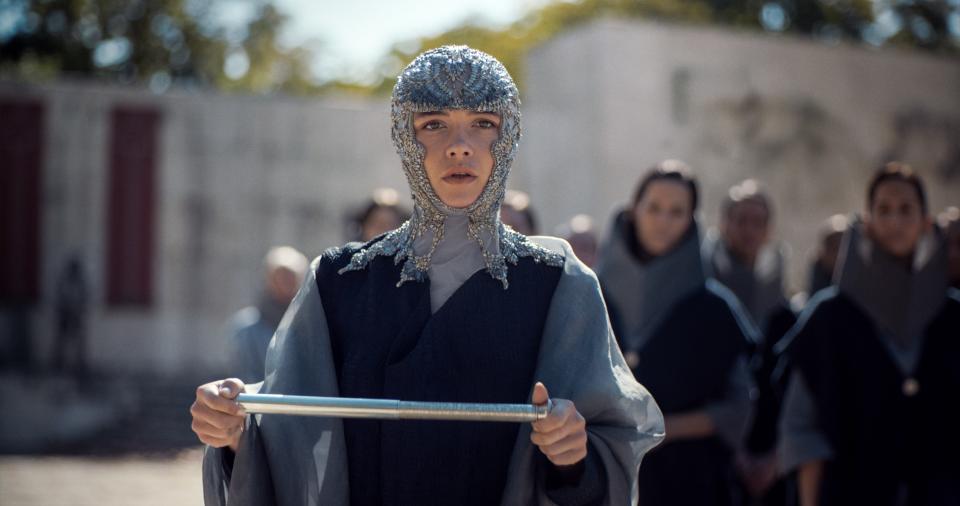
When Irulan finally meets her husband-to-be Paul Atreides in the final sequence, she's wearing a striking chainmail dress—complete with more headwear—which West thought of as "warrior princess" attire. It was heavy for Pugh, sure, but the idea was it to be "almost liquid on her body." It's maybe the ultimate in "modieval."
Still, West's influences for Irulan and her father Emperor Shaddam IV (Christopher Walken), who reside on Kaitain, weren't only found in the medieval art of Europe. Though they shot in Italy, surrounded by Brutalist architecture, she also looked to Japanese designers like Rei Kawakubo of Comme des Garcons and Yohji Yamamoto.
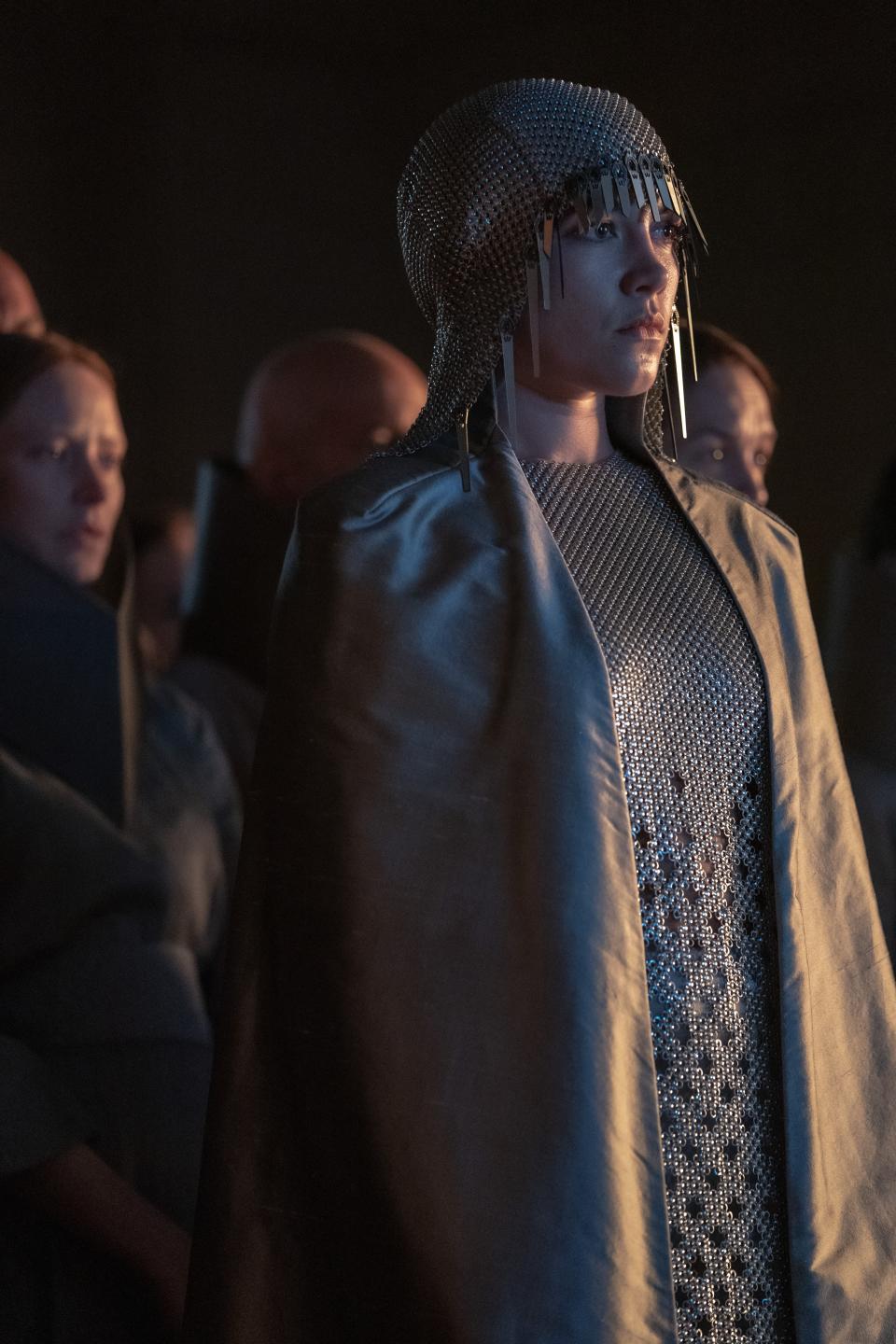
The high fashion of Lady Margot Fenring
Irulan isn't the only character whose looks have a designer sheen. Perhaps the most red-carpet-ready is Lady Margot Fenring, the Bene Gesserit temptress played by Léa Seydoux. She seduces Austin Butler's psychotic heir Feyd-Rautha in a deep blue dress that West explains was made from "a lot of very very expensive French taffeta," that could rise above her head without wiring. The main inspiration, however, West says, was 1940s Balenciaga.
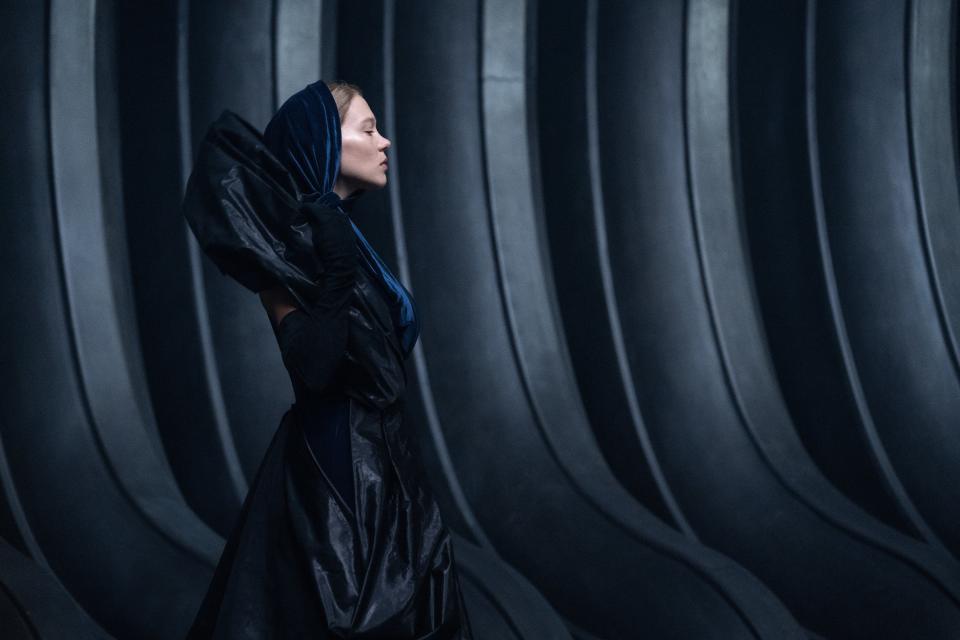
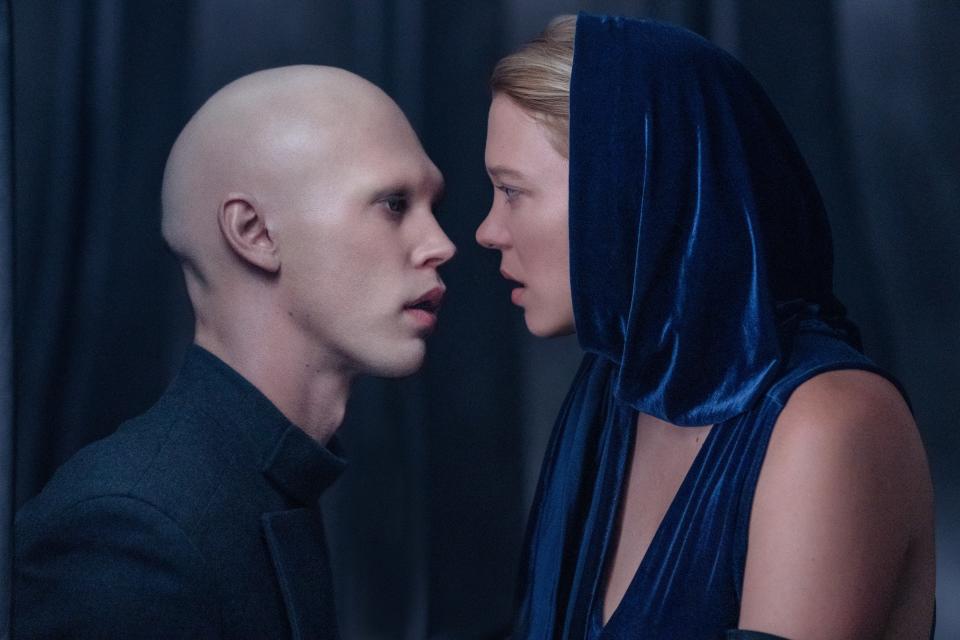
Feyd-Rautha and the Arena
Lady Margot travels to Giedi Prime, the home of the Harkonnen clan, to witness her mark Feyd-Rautha in action in an arena battle to celebrate his birthday. (The teeny-tiny glasses she watches him through were a props-department find, but West agrees they were "perfect.")
For Feyd's ensemble, West looked to the work of H.R. Giger, the artist and designer best known for designing the Xenomorph for Alien. "We wanted him to evoke a kind of Gothic vampire early, early dark medieval feeling, but yet be the future," she says. "Because of all of his action, when he fights in the arena, I wanted things that moved on him to show his almost balletic but powerful movements that he makes."
When Feyd goes up against prisoners from House Atreides, one of whom is not drugged and gives him a real fight, he is surrounded by a group of what West calls "picadors," named for Spanish bullfighters. These guys, however, look far more alien, clothed entirely in black with oversized hats. Villeneuve and his concept artist brought West a stick drawing of their idea for these aides. "I said, 'I like it, can I expand on it?'" she says. "So I really elongated those [hats]. It's like a toreador's hat, but very extreme and spiky. They are almost ghostlike."
To create the effect of a duel under Giedi Prime’s black sun, Villeneuve and his cinematographer Greig Fraser shot the arena sequence with an infrared camera, which meant West and her team had to get the shade of fabric just right. West tested materials with Fraser to make sure nothing could go awry. “You have to be very careful with infrared,” she said, "because everything was black, of course, but certain black fabrics will photograph white in infrared."
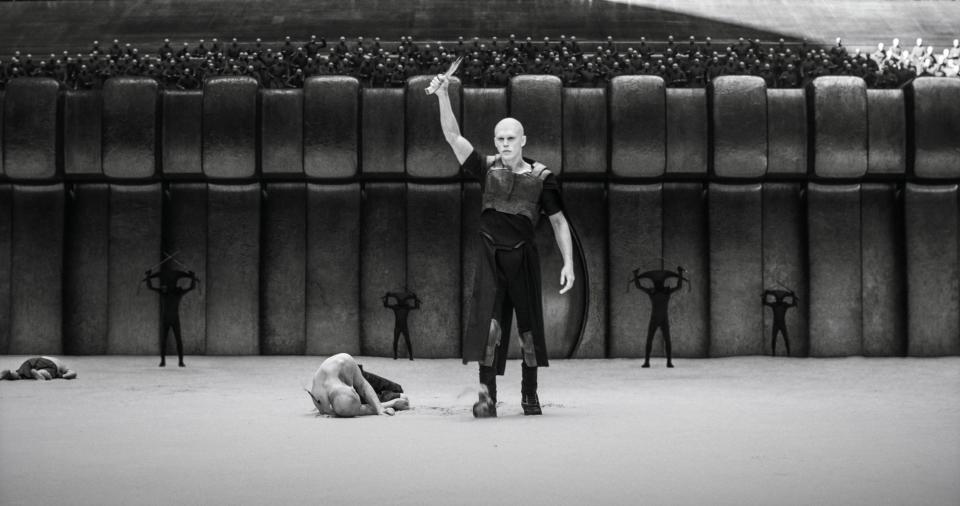
Into the sand with Paul and Chani
While the stillsuits remained the same from the first film, West had to add some accessories to them. For example, anyone who'd be riding a sandworm needed extra armor, to protect against the actual sand that would be pounding against them in these scenes. She made goggles as well as a piece that went over the stillsuit about an inch and a half thick. "They really were blasted with sand out in the desert," she says.
But West also looked to make the stillsuits of Paul (Timothée Chalamet) and Chani (Zendaya) a little more romantic despite their utility. She wanted to establish an emotional connection between them with gauzy, flowing wraps and cloaks. "Denis loves layering," she says. "It gave them all these layers. Subliminally, you realize that their relationship has all these different layers."
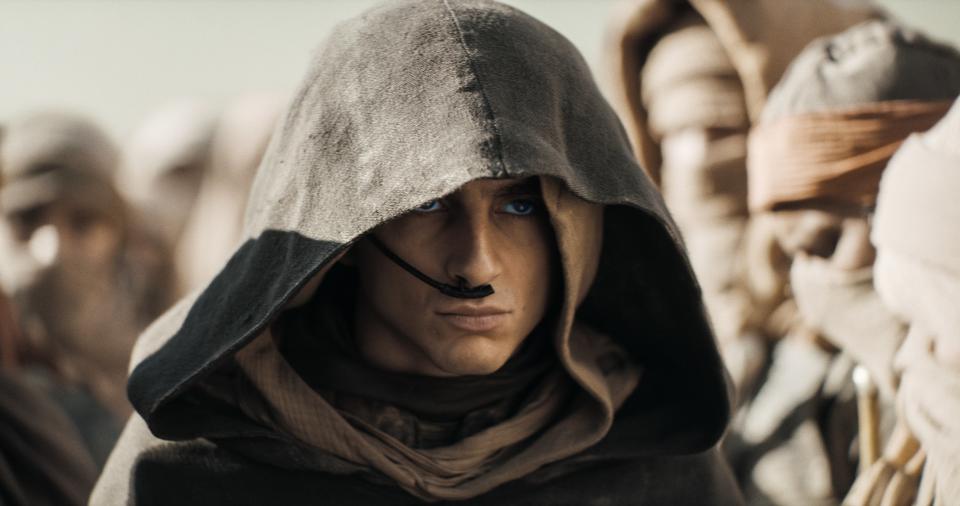
Lady Jessica and the southern Fremen
West estimates she made about 4000 costumes for the huge crowd scenes set in the realm of the Southern Fremen. "We had an enormous workshop with 80 people sewing," she says, comparing it to an airplane hangar.
To clothe this vast population, West imagined "all desert cultures combined in the future." The Fremen jewelry that Lady Jessica (Rebecca Ferguson) and the other Reverend Mothers wear is reconstructed from pieces West had shoppers and friends acquire from places ranging for Istanbul, North Africa, Russia, and Japan.
Jessica's look only grows more ornate as she and her son grow in power. "It's almost like an Egyptian sarcophagus when you see her finally in all of her velvets and silks, hand-painted with gold paint," West says. Once she drinks the Water of Life, which gives her (and her unborn child) the power of foresight, she achieves a final form West calls "essential elegance."
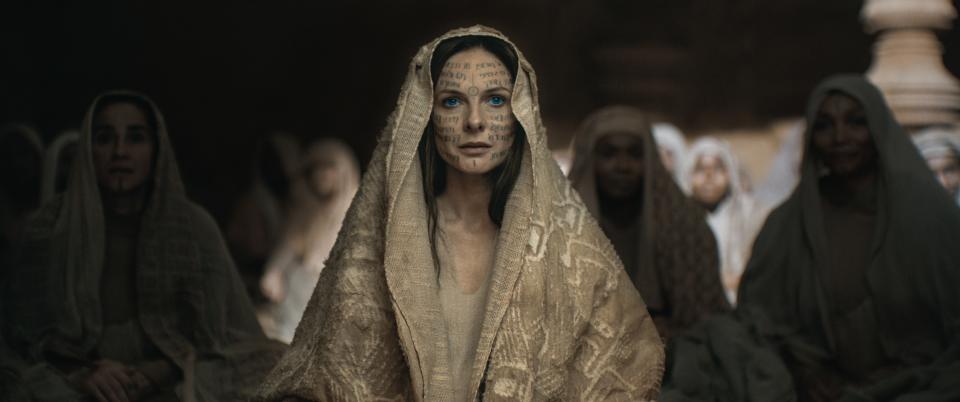
Originally Appeared on GQ

